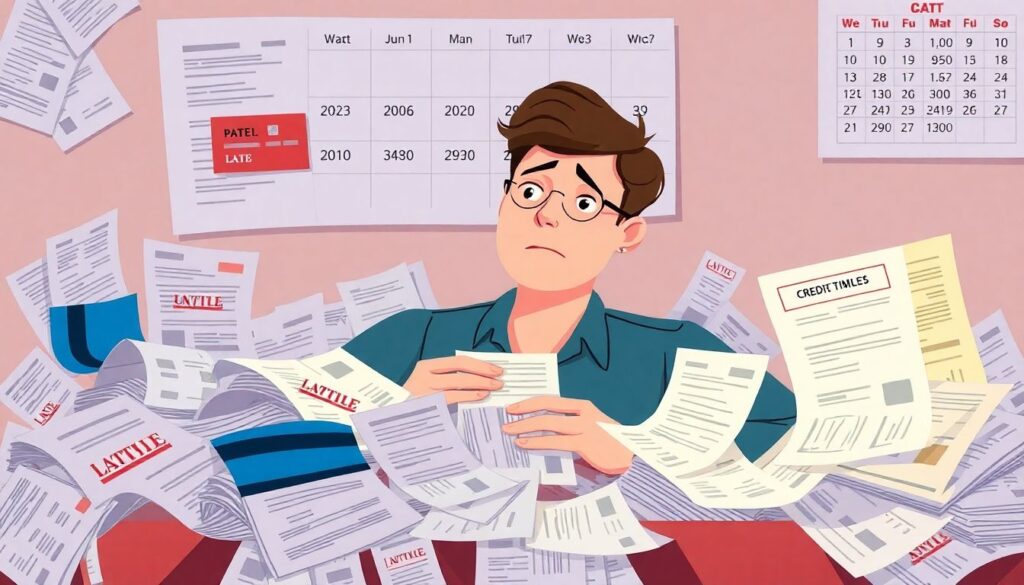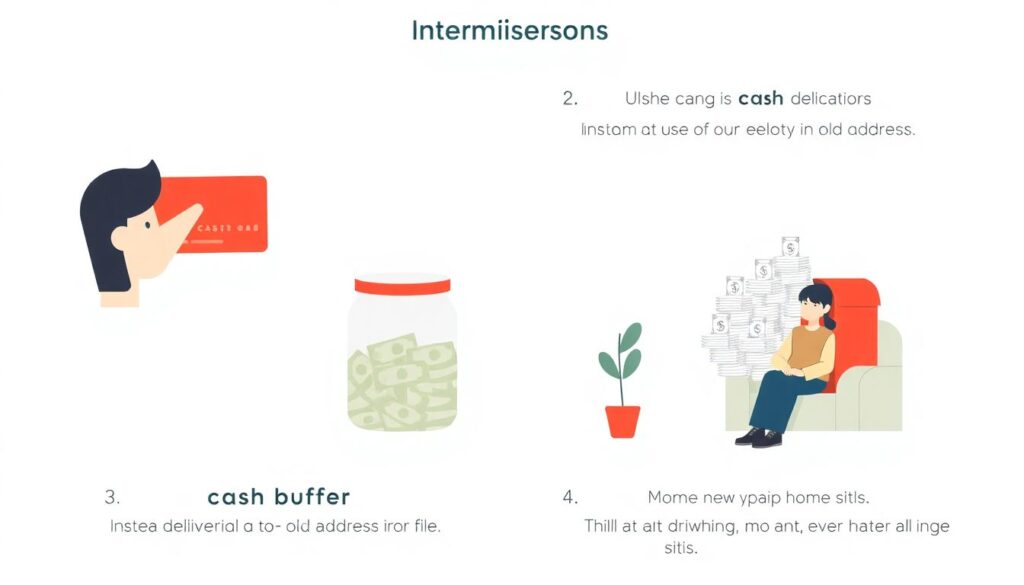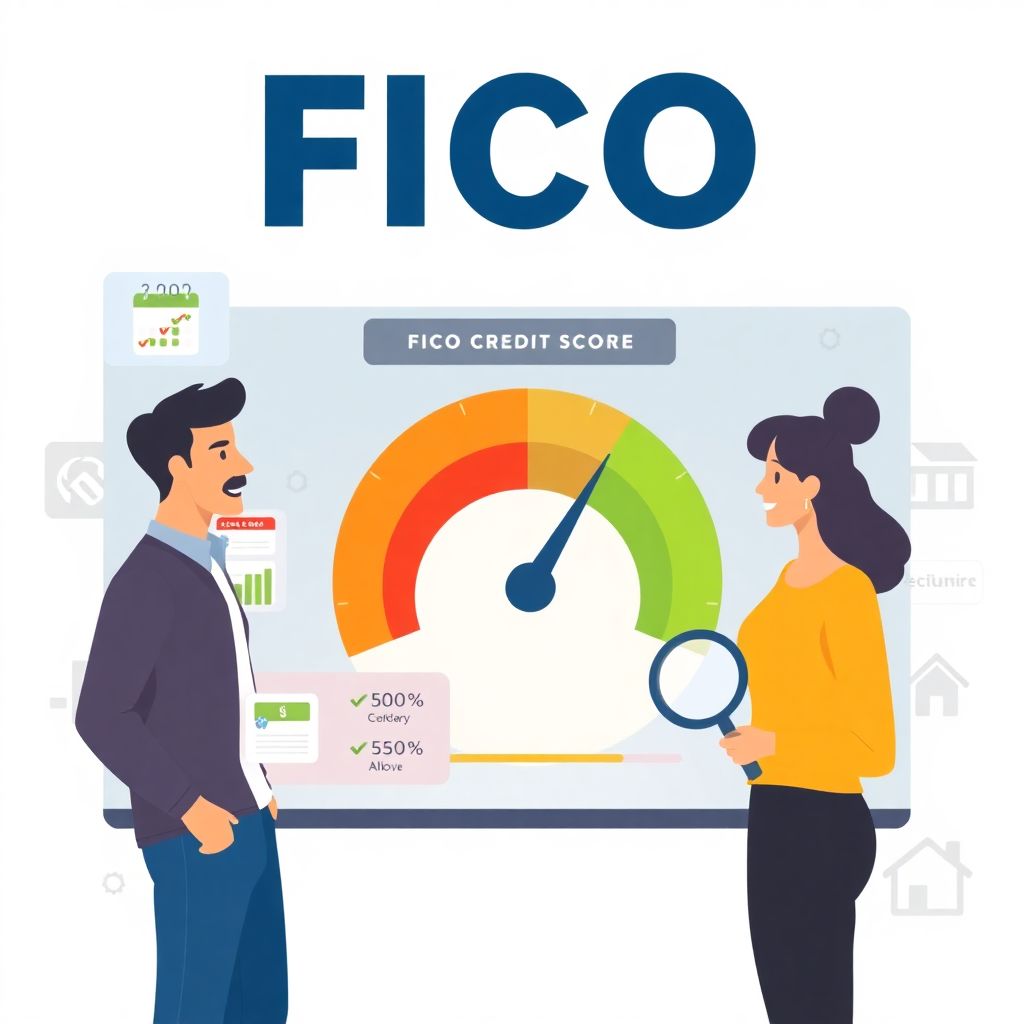What a FICO score actually is
A FICO score is a three‑digit numerical indicator (typically from 300 to 850) that estimates how likely you are to repay borrowed money on time. It’s a credit risk model created by Fair Isaac Corporation, and it’s the benchmark many banks, credit unions, and card issuers use when deciding whether to lend and at what interest rate.
Behind that simple number is a structured algorithm that pulls data from your credit reports at Experian, Equifax, and TransUnion. It doesn’t care how smart you are, how much you “mean” to pay your debts, or what job you have. It cares about patterns in your behavior: how consistently you pay, how much of your limits you use, how long you’ve had accounts, how often you apply for new credit, and how mixed your credit profile is.
In other words, your FICO score is a compact statistical summary of your past behavior with credit, used to forecast your future behavior with credit.
—
How your FICO score affects your money life
Your FICO score is not just a bank’s toy metric; it’s a pricing tool. A high score doesn’t simply get you “approved” — it can cut your interest costs by tens of thousands of dollars over a lifetime. Mortgage rates, auto loans, personal loans, and many credit cards use FICO-based pricing tiers. Moving from “fair” to “good” or “excellent” can literally shrink your monthly payments.
A score in the mid‑700s or higher often unlocks premium credit cards, lower insurance premiums in many states, and stronger negotiating power with lenders. Conversely, a low score can trap you in subprime products with high annual percentage rates (APR), steep fees, and inflexible terms.
You’ll sometimes see debates like “fico score vs credit score which is better for loans.” Technically, a FICO score is one type of credit score. Lenders can also use VantageScore or even proprietary internal models. For mortgages and many traditional loans, FICO scoring models are still the primary benchmark, especially older FICO versions embedded in legacy underwriting systems. So when you focus on understanding and improving your FICO score, you’re usually aligning with what most mainstream lenders actually look at.
—
Common beginner mistakes that quietly destroy FICO scores

A lot of people don’t “break” their credit with one big disaster. They slowly erode it through small, repeated mistakes. Those mistakes are fixable — but they’re much easier to prevent once you can spot them.
One of the most damaging errors is assuming that paying “most” of your bills on time is good enough. In FICO models, a single 30‑day late payment on a credit card or installment loan can hurt you for years, especially if your history is thin. Payment history is the single heaviest factor, so there’s no such thing as an “unimportant” late.
Another surprisingly common misstep is maxing out cards while telling yourself, “I always pay them off eventually, so it’s fine.” FICO looks at utilization ratio: the percentage of your available revolving credit that you’re using. Running cards near or at 100% utilization, even if you don’t miss payments, signals elevated risk and can drag otherwise strong scores down by dozens of points.
Here are more beginner pitfalls that often cause invisible damage:
– Closing old credit cards “to be safe,” not realizing this can shorten your average age of accounts and reduce available limits, which can lower your score.
– Applying for multiple store cards in a short window just for sign‑up discounts, creating a cluster of hard inquiries and new accounts.
– Ignoring medical bills or small collections because they “seem minor,” then discovering they’ve triggered derogatory marks on your reports.
– Believing that checking your score hurts it, and therefore never monitoring it at all.
A subtle but serious mistake is delegating your future to someone else entirely — for example, paying for credit repair companies to fix low fico score and expecting them to perform miracles. Some reputable firms can help with error correction and negotiation, but they can’t legally erase accurate negative information. If your behavior doesn’t change, your scores won’t sustain improvement.
—
Practical fico score tips to improve credit fast
Improvement doesn’t mean perfection, and it doesn’t always take years. You can make meaningful progress in a matter of months if you focus on the levers that FICO models weigh the most.
Some high‑impact, realistic actions include:
– Automate every minimum payment. Use autopay for at least the minimum due on all accounts so you never miss by accident. You can always pay extra manually.
– Attack utilization aggressively. Aim to keep reported balances under ~30% of each card’s limit; under 10% is even better. One extra payment right before the statement date can reduce your reported balance and bump your score.
– Stabilize, don’t churn. Limit new applications while you’re rebuilding. Let your existing accounts age.
– Dispute genuine errors. If you find incorrect late payments, duplicate accounts, or fraudulent activity, dispute them with the bureaus in writing and via their online portals.
People often ask how to raise fico credit score 100 points in a short period. That level of jump is most achievable for someone starting from a low or thin profile: paying down high card balances, adding one or two well‑managed accounts, and removing legitimate errors can stack into a triple‑digit gain over 6–12 months. For someone already in the high‑600s or 700s, gaining 100 points is less realistic; you’re optimizing around the edges instead of fixing foundational issues.
If you’re looking for structured fico score tips to improve credit fast, focus on two primary metrics you can influence right away: on‑time payments going forward and total revolving utilization. Reducing utilization from, say, 85% to under 30% on all cards is often the single most powerful “fast” intervention.
—
Real-world turnarounds: inspiring but realistic stories

Consider Maya, a software engineer who graduated with a mix of student loans and three credit cards. She treated her cards as extra income, not as a tool. Within two years, her utilization was over 90%, and after missing two payments when switching jobs, her FICO scores dropped into the low‑600s. She felt stuck: higher interest made it harder to pay down balances, which kept her score low — a classic debt spiral.
Instead of giving up, she treated her finances like a technical project. She pulled free reports from all three bureaus, listed each account with APRs and due dates, and built a simple “debt sprints” plan: minimums on everything, then extra cash targeting the highest‑APR card first. She set calendar reminders for statement dates so she could push payments before balances were reported. In 10 months, she had reduced utilization to under 30%, never missed another payment, and crossed into the mid‑700s. That translated into a better auto loan rate and hundreds saved per year.
Another case: an entrepreneur, James, had a failed startup that left him juggling business debt on personal cards. Collections and charge‑offs tanked his FICO scores into the 500s. Instead of hiding from the mess, he treated negotiation as customer support in reverse. He contacted each creditor, arranged settlements he could afford, and made sure all agreements were confirmed in writing. Over the next year and a half, he built a new positive history with a secured card and a small credit‑builder loan from a local credit union. His scores climbed into the high‑600s — not perfect, but high enough to refinance a punishing car loan and free up monthly cash flow.
These aren’t fairy tales or “instant hacks.” They’re examples of people who turned their credit into a managed system instead of a random by‑product of everyday chaos. The model is simple: understand the scoring rules, set up automated safeguards, and make consistent, incremental improvements.
—
Choosing tools: from credit monitoring to credit repair
You don’t need fancy software to improve your FICO scores, but smart tools can make the process easier and safer. A best credit monitoring service for fico score can help you track changes, detect fraud quickly, and see the specific risk factors that are holding you back (such as “high utilization on revolving accounts” or “too many accounts with balances”). When evaluating monitoring services, focus on:
– Whether they show actual FICO scores (and which versions), not just generic “educational” scores.
– Real‑time or near‑real‑time alerts for new inquiries, new accounts, and major changes.
– Clear, itemized access to your underlying credit reports.
On the other hand, be careful with promises that sound like magic. Some credit repair companies to fix low fico score advertise “guaranteed deletions” or “new credit identity” schemes. Those can cross legal lines and can make your situation worse. A reputable helper — whether a nonprofit credit counseling agency or a legitimate law firm specializing in consumer credit — will be transparent: they can help you understand your options, dispute clear errors, and sometimes negotiate, but they cannot erase accurate, negative history.
Think of third‑party tools and services as diagnostics and support, not as a substitute for your own behavior. A monitoring dashboard can show you that your utilization is high; only you can change your spending and repayment patterns.
—
Frequent rookie mistakes you can skip entirely

To connect it all, here’s a quick rundown of specific “newbie” habits that you can decide to avoid starting today:
– Treating credit cards as emergency savings instead of building an actual cash buffer.
– Assuming that if no one is calling you, everything is fine, even if bills are going to an old address or email.
– Ignoring small subscription charges that lead to overdrafts or missed minimum payments.
– Not reading the terms when a promotional 0% APR ends, and then getting hammered with high interest plus a utilization spike.
– Believing that you have to carry a balance and pay interest “to build credit” — that myth costs people a lot of money. Paying in full and on time is perfectly compatible with great FICO scores.
New borrowers also often conflate tools and outcomes: they obsess over “the right card” or “the perfect loan” and almost ignore the underlying metrics FICO cares about. The card is just a container; the behavior is what forms the pattern.
—
Building your own learning roadmap
Treat your credit education as an ongoing project, not a one‑time crash course. Start by pulling your free annual reports from the three major bureaus through the official government‑authorized site. Read them line by line; every account, every inquiry, every remark is a data point the FICO algorithm might interpret.
Then, design your own lightweight curriculum:
– Follow a reputable personal finance educator or organization that explains credit mechanics clearly, not just “hacks.”
– Learn the basics of how FICO score versions differ (mortgage vs bankcard vs auto) so you’re not confused when you see multiple numbers.
– Revisit your reports and scores at set intervals (for example, monthly or quarterly) instead of only when you need a loan.
As you build competence, you’ll notice something: the same disciplined habits that raise your FICO score — timely payments, controlled utilization, strategic borrowing — also support every other part of your financial life. Your score stops feeling like a mysterious judgment and becomes a predictable output of choices you understand and control.
If you invest a bit of attention now, the long‑term payoff is leverage: lower borrowing costs, more flexible opportunities, and the confidence that comes from knowing you can navigate the credit system on your own terms.

